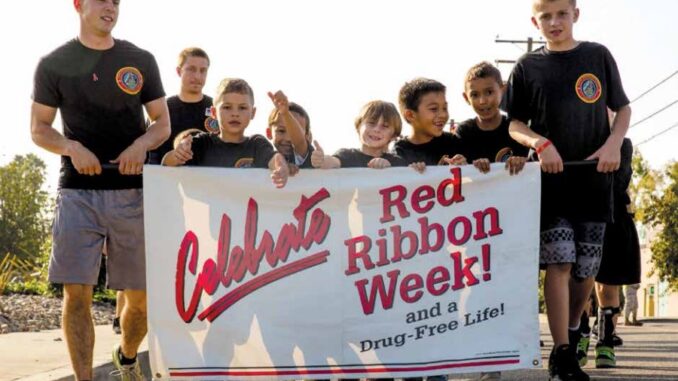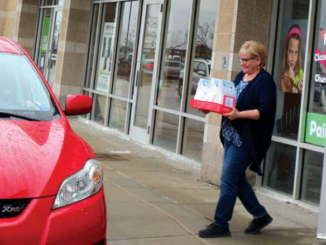
Held annually in late October since the ’80s, Red Ribbon Week began as a tribute to a single fallen
DEA agent before becoming something much larger.
RIBBONS
The first National Red Ribbon Week was organized in 1988 by the National Family Partnership, after an official proclamation from Congress. President Ronald Reagan and first lady Nancy Reagan served as the first honorary co-chairs. Today, tens of millions of students and adults join in activities to ensure that Red Ribbon Week is both a lasting dedication to DEA agent Enrique “Kiki” Camarena’s memory and an opportunity to discuss the dangers presented to young people by drugs.
BEGINNINGS
Friends and neighbors initially began wearing red ribbons in 1985 to commemorate the sacrifice of Camarena, an undercover agent who was brutally murdered after uncovering a multi-million-dollar marijuana operation in Chihuahua, Mexico. A friend began the ribbon campaign in Camarena’s California hometown, and it soon came to symbolize a commitment to raising awareness about the destruction associated with drugs. The campaign spread across the state, and then eventually became part of a broader nationwide effort.
THEME
This year’s Red Ribbon Week theme — “Celebrate Life. Live Drug Free.” — was created by a trio of seventh graders at New York’s Wayland-Cohocton Middle School named Chelsea Abbott, Emily King and Celise Wicker. The theme is a reminder, according to RedRibbon.org, “that everyday Americans across the country make significant daily contributions to their communities by being the best they can be because they live drug free.”
PLEDGES
Every Red Ribbon Week has its own annual theme, but one element remains from year to year: pledges meant to reinforce the event’s core values. They’re aimed at both parents and students, and can also be found at RedRibbon.org. Parents promise to “talk to our children and the children in our lives about the dangers of drug abuse,” while making clear rules, setting a good example, monitoring their behavior and enforcing appropriate consequences. Here’s the youth pledge: “I pledge to grow up safe, healthy and drug free by understanding the dangers of drug use and abuse, respecting myself and being drug free, and spreading the word to family and friends about the importance of being healthy and drug free.”


